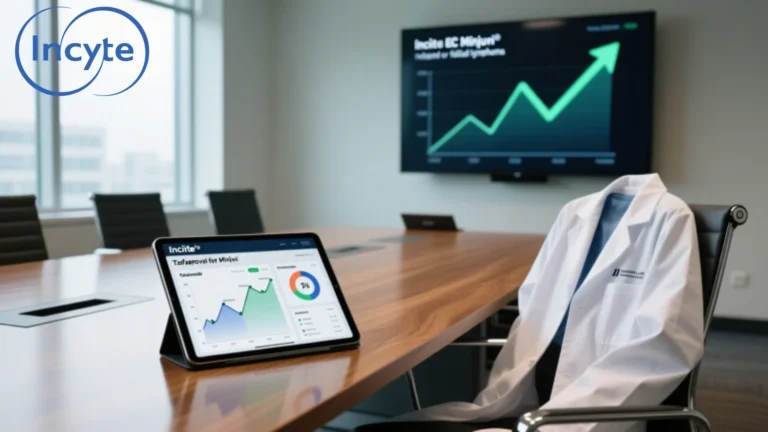
Merck and imec Forge Strategic Alliance to Revolutionize Drug Discovery Through Advanced Microphysiological Systems
Merck, a global leader in science and technology, and imec, a premier international hub for research and innovation in nanoelectronics and digital technologies, have announced a landmark strategic partnership. This collaboration aims to co-develop a cutting-edge microphysiological systems (MPS) platform that holds the promise of transforming the drug discovery and development process. By uniting Merck’s biological expertise and patient-derived model technologies with imec’s breakthroughs in chip design and biosensing, the partners seek to dramatically improve the predictive power of preclinical testing while progressively minimizing reliance on animal models.
At the heart of this joint initiative lies a shared vision to accelerate the delivery of safer, more effective therapies to patients. The new platform will combine Merck’s robust portfolio of induced pluripotent stem cells (iPSCs) and patient-derived organoids with imec’s advanced semiconductor technologies—creating a next-generation model system that closely mimics human physiology. This integration represents a significant advancement in the field of translational medicine and in-vitro testing, and is expected to redefine how pharmaceutical companies assess the safety, efficacy, and pharmacokinetics of investigational drugs.
A Holistic and Disruptive Approach to Preclinical Research
The strategic collaboration between Merck and imec is driven by a mutual recognition that current preclinical models are often limited in their ability to predict human outcomes. Traditional methods—particularly those involving animal testing—frequently fall short in translating biological responses to human physiology, contributing to high rates of late-stage clinical trial failures. In contrast, the new MPS platform will harness the power of human-relevant biological systems and precision biosensing technologies to create a closed-loop, AI-augmented drug discovery engine.
Steven Johnston, Vice President and Head of Technology Enablement at Merck, emphasized the transformative nature of the project. “By integrating Merck’s industry-leading iPSC and organoid technologies with imec’s disruptive semiconductor hardware, we are building a connected in-vitro and in-silico pipeline,” he said. “This platform will be capable of generating the high-quality biological training data critically needed to advance AI-driven drug discovery. The result is a closed-loop system that not only enhances the predictive power of early-stage models but also accelerates the identification of promising new drug candidates.”
Johnston further explained that the integration of real-time biosensing with organoid-based models will enable researchers to simulate complex human organ functions more precisely than ever before. “When combined with AI algorithms that can interpret and model this data,” he noted, “we are entering an era where we can begin to reduce the trial-and-error that currently characterizes early-stage drug development.”
Bridging the Gap Between Biology and Silicon
Imec, known for its pioneering work in nanoelectronics, is bringing its unique capabilities in chip design, biosensors, and microfluidics to the partnership. Paru Deshpande, Vice President of R&D at imec, outlined the critical role of technology in overcoming the limitations of existing preclinical models.
“Adequate preclinical models require not only biological relevance but also the capacity to generate diverse, high-throughput data,” Deshpande explained. “This is something that conventional models simply cannot provide. At imec, we are developing chip technologies that close this gap. These innovations—when paired with Merck’s deep expertise in life sciences—have the potential to provide pharmaceutical researchers with richer, more actionable datasets to guide AI-driven drug development.”
Deshpande emphasized that imec’s chip-based platform is being engineered for scalability and modularity, allowing researchers to configure systems from single-organ setups to complex, multi-organ environments. This flexibility will empower scientists to study drug interactions across interconnected organ systems in a way that was previously not feasible with traditional in-vitro models.
Modular, Standardized, and Scalable: A Platform Built for the Future
A core feature of the new MPS platform is its highly adaptable, modular architecture. The system is designed to support standardized interfaces, enabling seamless integration of diverse organoid models from Merck’s broad catalog. This plug-and-play capability allows users to customize the platform for specific experimental needs, from liver toxicity studies to multi-organ pharmacokinetic modeling.
Crucially, the platform incorporates imec’s state-of-the-art biosensors, enabling in situ, label-free measurements of cellular responses in real time. These integrated sensors provide dynamic insights into cell metabolism, protein expression, and tissue health—offering researchers a powerful window into how human organs respond to chemical compounds over time. This enables both better data reproducibility and enhanced experimental control.
For Merck, the practical usability of the platform is paramount. The system will be validated within its own Healthcare business laboratories to ensure it meets the operational demands of real-world research settings. Once validated, it will be offered to scientists and pharmaceutical partners around the globe through Merck’s Life Science division.
By standardizing the building blocks and interfaces that underpin the system, the partnership aims to address one of the pharmaceutical industry’s persistent challenges: reproducibility. Too often, differences in experimental design and model quality can lead to inconsistent results that undermine confidence in preclinical data. The MPS platform’s standardization will not only streamline setup but also enable more meaningful comparisons across studies, institutions, and therapeutic areas.
A Platform for Collaboration and Accelerated Innovation
Merck and imec view this project not as a closed endeavor, but as an open invitation to the broader pharmaceutical and biotechnology community. Both organizations are actively encouraging other biopharma players to join the initiative and contribute to the development and validation of the next generation of MPS platforms. This collaborative spirit reflects a growing recognition that solving complex challenges in drug development will require collective effort across scientific disciplines and organizational boundaries.
“The complexity of human biology demands a collaborative, interdisciplinary approach,” Johnston said. “By working together—biologists, engineers, data scientists—we can create a platform that not only improves how we test new medicines but fundamentally changes the speed and accuracy with which we bring treatments to patients.”
Deshpande echoed this sentiment, noting that the power of the platform lies in its ability to act as a unifying interface between biology, data, and computation. “This isn’t just a tool for better experiments—it’s a new paradigm for biomedical research,” she said.
Toward a New Era in Predictive Biology
The partnership between Merck and imec comes at a pivotal moment for the pharmaceutical industry. With rising drug development costs, increasing regulatory scrutiny, and growing ethical concerns around animal testing, there is a pressing need for more predictive, human-relevant, and scalable model systems. The emergence of microphysiological systems that integrate stem cell biology with smart sensing technologies offers a powerful answer to this challenge.
As Merck and imec continue to refine and expand their platform, they are laying the groundwork for a future where drug discovery is faster, more cost-effective, and significantly more human-centric. By combining scientific excellence, technological innovation, and a collaborative mindset, the two organizations are not just developing a product—they are shaping the future of biomedical research.
In the years ahead, this pioneering MPS platform could become a cornerstone of preclinical testing worldwide, ushering in a new era of predictive biology where safer, more effective therapies reach patients with unprecedented speed and precision.




